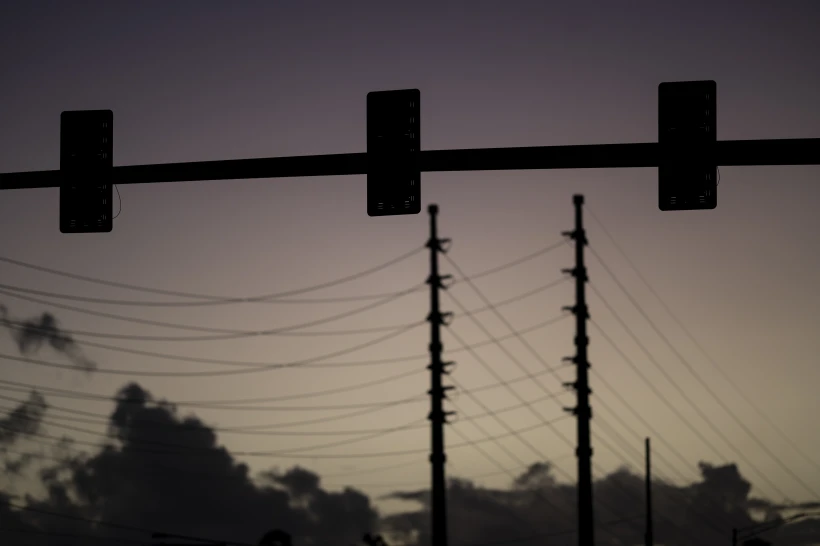SAN JUAN (AP) — As Puerto Rico struggles with chronic power outages and a decaying electric grid, federal officials believe the U.S. territory can fully shift from fossil fuels to clean energy by 2050, according to a report Wednesday that has been two years in the making.
The report by the U.S. Department of Energy and the Federal Emergency Management Agency surprised those who thought that a recent law requiring Puerto Rico to reach 40% of clean energy by next year and 100% by 2050 was unrealistic.
“This transition will be a substantial effort and won’t happen overnight, but 100% clean energy is 100% possible,” said Agustín Carbó, Puerto Rico’s grid modernization director within the U.S. Department of Energy.
The department’s secretary, Jennifer Granholm, who traveled to Puerto Rico to help present the study, echoed Carbó’s comments, saying it was a “big, hairy audacious goal” that she believes can be accomplished.
Power plants that rely on coal, petroleum and natural gas currently generate about 97% of Puerto Rico’s electricity, with renewables accounting for only 3%, according to the U.S. Energy Information Administration.
The U.S. Department of Energy and the Federal Emergency Management Agency aim to change that.
As part of the push, officials on Wednesday announced a new federally funded program that will subsidize residential rooftop solar and battery storage systems for up to 30,000 low-income households on the island. Homeowners who qualify can start applying by February 22.
Currently, some 110,000 individual solar systems are connected to Puerto Rico’s electric system, which serves around 1.2 million customers, and an average of 4,000 new solar systems are joining each month, said Gov. Pedro Pierluisi.
The two-year study found that Puerto Rico has more than tenfold the renewable energy resources required to meet the island’s demands through 2050, but that new infrastructure capable of generating hundreds of megawatts is needed.
Officials warned that such an investment could lead to additional rate increases on an island that already has a much higher electric rate compared with the U.S. mainland. Residential rates are 24 cents per kilowatt-hour, compared with an average of 16 cents in the U.S. mainland. Meanwhile, industrial rates are 25 cents per kWh, compared with 8 cents in the mainland.
“A strategic plan to control rate impacts while achieving better reliability over the near term is needed,” the report stated.
Rate increases are particularly concerning in Puerto Rico, which has the highest poverty rate compared with any U.S. state at more than 40% and has struggled to attract new investors as it emerges from the biggest U.S. municipal bankruptcy in history.
The report studying the shift to clean energy comes at a critical time.
“Puerto Rico’s current electricity system is complex, isolated, reliant on imported fuels, and vulnerable to extreme weather events and other natural hazards,” according to the report.
While ongoing power outages are partly blamed on Hurricane Maria razing the grid as a powerful Category 4 storm in September 2017, the problems began much earlier.
“Decades of operational, maintenance, and financial challenges have resulted in a system that lags far behind accepted reliability levels,” the report found.
The frequency and duration of power outages in Puerto Rico has worsened in recent years, with clients spending an average of 22 hours without power last year, according to a report submitted to the island’s Energy Bureau in late January.
The generational capacity of Puerto Rico’s power plants also has dropped from 52% to 42%, which officials with Genera PR, the company that operates and maintains such units, said was a result of temporarily taking them offline for maintenance.
The company said it expects ongoing projects to boost capacity to up to 60% sometime in the future.
Puerto Rico’s fragile power grid already depends on temporary generators installed last year to lessen the number of outages and allow crews to do maintenance. In a deal reached earlier this month with FEMA, the island’s government will operate the generators through the end of 2025.
The grid also will soon be backed by a battery energy storage system as part of a recently approved $648 million project funded with federal money.
By DÁNICA COTO/Associated Press



